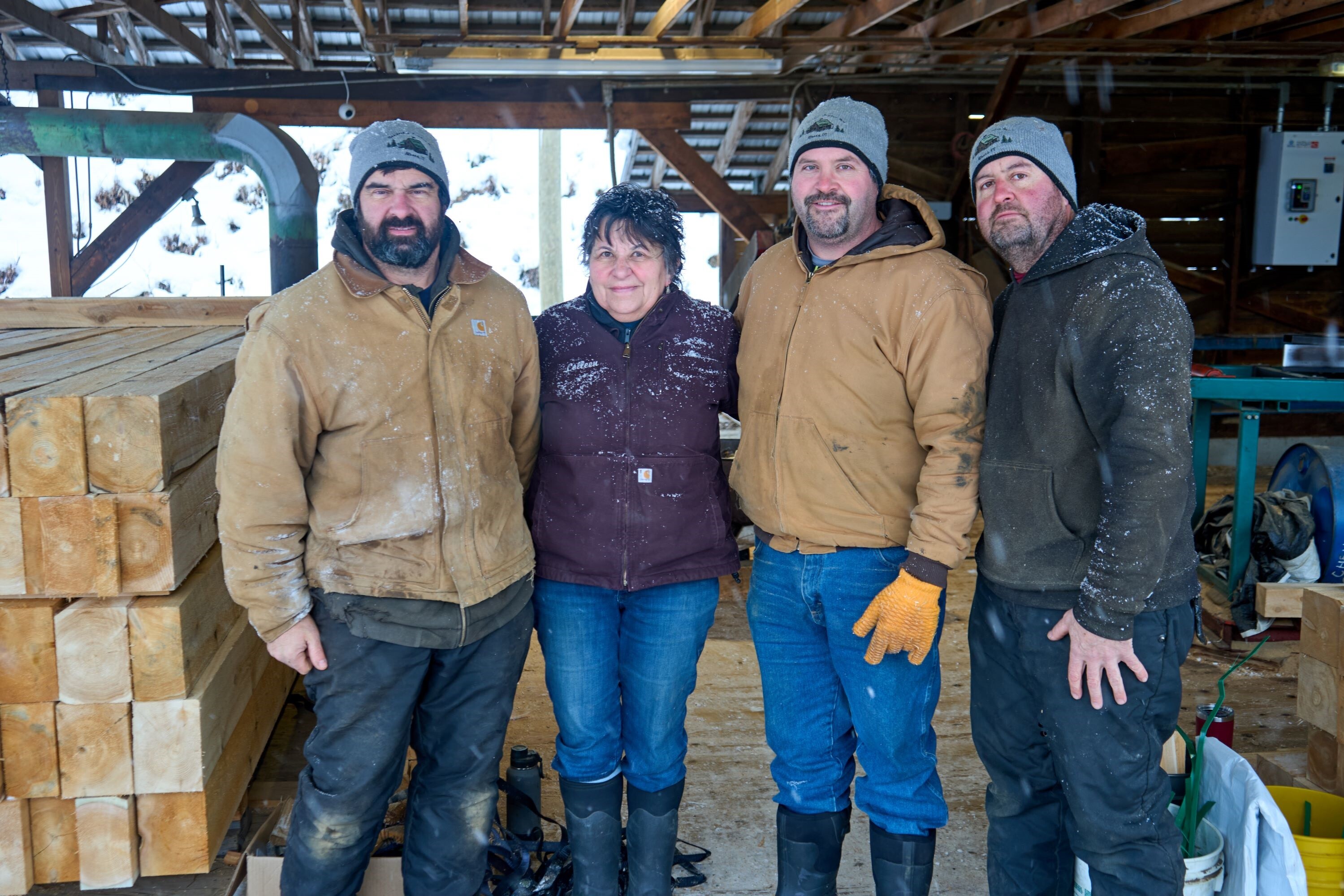Albany’s Goodridge Sawmill Celebrates 50 Years with a Power Upgrade

Mark Goodridge climbs up sawdust-covered iron steps into his family’s sawmill on the Bailey Hazen Road in Albany, just off Route 14. Dressed in blue jeans, a black hoodie, and a wool cap, he talks about the humming system that’s at work, and the big switch his family recently made to the energy that powers their livelihood.
Between whining passes of logs through the main saw, Mark explains that he and his mother Colleen and brothers Doug and Brian this year are celebrating the 50th year of the mill’s operation, which specializes in turning cedar logs, most of which are harvested within 70 miles of their mill, into fenceposts, decking, siding, and paneling, and outdoor play structures sold across New England.
For years, the mill had been powered by electricity, but it was a hard-won electricity. The juice was produced by a diesel-powered generator next to the mill. In order to run any equipment in the mill, whether it was a chipper, a planer, a frame saw, or the big saw itself, that generator had to be cranked up. Noise, emissions, fuel deliveries, the volatile price of diesel, maintenance. These were all part of the deal. That was just how it was.
Recently, the Goodridge family embarked on some long-term business planning with the Vermont Farm and Forest Viability Program. The notion of running three-phase electricity up to the mill came up. Maybe doing that would cut some costs? And make operations more efficient? Maybe reduce noise and pollution?
“We talked for a while about it, did the numbers, and eventually decided to move ahead,” Mark said.
The project, which included running just over a mile of new three-phase power along Route 14 and up to their mill, included several funding sources, including participation from the Goodridge family itself, the Working Lands Enterprise Fund, Efficiency Vermont, and VEC. The project was finished last year and so far, things seem to be running well.
The family calculates that they will likely save about 13,000 gallons of diesel fuel annually and between $27,000 and $30,000 a year by using the three-phase power instead of running and maintaining a generator. In today’s tricky economic environment, where headwinds seem to keep buffeting many rural land-based businesses, these efficiencies are critical.
And the new system adds convenience and flexibility for the family, too.
“Say I have a little time on the weekend,” Mark said. “I can come out here and set up the planer or run the chipper without having the crank up the generator. The power is always there and ready to go.”
Before, he said, the guys had to turn on the generator and start burning diesel fuel every time they wanted to use any of the equipment, even the smaller tools.
“There was no clear relationship between the load we were using and the amount of fuel used, and now there is,” Mark said.
The new access to power also keeps options open for expansion. Someday, for example, the family could install a lumber drying kiln on the property, fueled by the new, always-on power. Winding up a generator just to create the relatively small amount of electricity to warm a kiln didn’t seem like a smart approach. But now the Goodridges are ready if they want to expand.
“The project definitely took some time and coordination,” Mark said. “But we all kept working on it, including the folks at VEC, who were great. And we got lucky – in the end, all the pieces fell into place.”